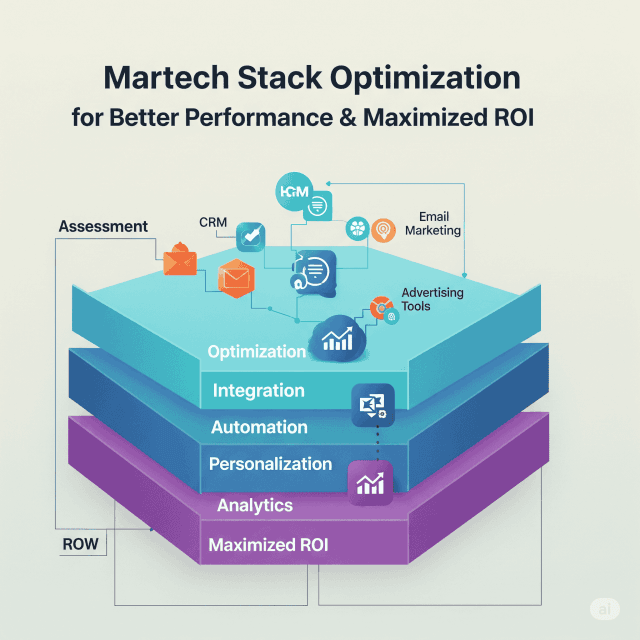In today’s fast-paced digital landscape, marketing technology (martech) plays a crucial role in driving business success. However, many organizations invest heavily in various martech tools without fully realizing their potential. To truly maximize your return on investment (ROI), it’s imperative to not only select the right tools but also efficiently optimize your martech stack. Here’s how you can achieve better performance and ensure that each tool in your arsenal contributes to your overarching business goals.
Understanding Your Current Stack
Before diving into optimization, take a step back to evaluate your current martech stack. Conduct an audit of the tools you currently use:
- Inventory Your Tools: Create a comprehensive list of all martech solutions you’re leveraging—from CRM systems to analytics platforms.
- Assess Usage and Adoption: Evaluate how frequently each tool is used. Interviews or surveys with team members can provide insights into which tools they find valuable and which ones are underutilized.
- Identify Overlap: Look for redundancies. Are there tools serving similar functions? Streamlining your stack can reduce costs and improve efficiency.
Setting Clear Objectives
Clearly defined goals are fundamental for measuring success. Work with your marketing team to establish specific, measurable objectives that align with your business goals, such as:
- Increasing lead generation by 20%
- Reducing customer acquisition costs by 15%
- Enhancing customer retention rates
Having concrete objectives will guide your optimization efforts and provide benchmarks for assessing performance.
Streamlining Data Management
Data is at the heart of effective marketing. Optimize your martech stack by focusing on data management:
- Unified Data Sources: Ensure that data from different tools can be integrated. Use Customer Data Platforms (CDPs) to create a single customer view for better decision-making.
- Data Quality Control: Regularly clean and maintain your data. This involves removing duplicates, updating outdated information, and ensuring consistency across platforms.
- Analytics Alignment: Align analytics tools with your data sources to get actionable insights. Use them to monitor performance metrics regularly.
Enhancing Integration Between Tools
One of the most significant challenges businesses face with martech is the insufficient integration between their tools. Enhancing connectivity can improve workflows and reduce manual effort:
- API Utilization: Leverage APIs of your tools to facilitate seamless data transfer. This allows for real-time insights and consolidated reporting.
- Utilizing Middleware: Employ middleware solutions like Zapier or Integromat to connect tools that don’t natively integrate. This can save time and resources.
- Regularly Review Integrations: As your business evolves, so do your tools. Regularly assess and update integrations to ensure they meet current business needs.
Investing in Training and Development
Even the most advanced martech tools can underperform if users are not well-trained. Investing in people is just as crucial as investing in technology:
- Training Programs: Provide comprehensive training on each tool within your martech stack. This should include both initial training and ongoing education to keep staff updated on new features.
- Encourage Experimentation: Foster a culture where team members are encouraged to explore and utilize the tools to their full capability.
- Feedback Loops: Create channels for feedback on the tools being used. Use this feedback to continuously improve training programs and adjust tool usage as necessary.
Analyzing ROI
Establishing a framework for ROI evaluation is important for understanding the effectiveness of your martech investments:
- Defining Metrics: Decide on the metrics that matter most for evaluating performance—be it customer acquisition costs, lead-to-customer conversion rates, or overall sales growth.
- Regular Reporting: Set up regular performance evaluations to track progress against your defined ROI metrics. Use dashboards for visual representation.
- Iterative Improvement: Based on performance metrics, continuously refine your usage of tools. Adopt an Agile approach to martech management, allowing for rapid iterations based on data insights.
Conclusion
Optimizing your martech stack is not a one-time endeavor; it requires a commitment to ongoing evaluation, training, and integration. By aligning your tools with clear objectives, ensuring data quality, enhancing integrations, and investing in your team’s skills, you can maximize ROI and improve overall marketing performance. As the digital landscape continues to evolve, staying proactive in optimizing your martech stack will help your organization stay ahead of the competition and drive sustained growth.








